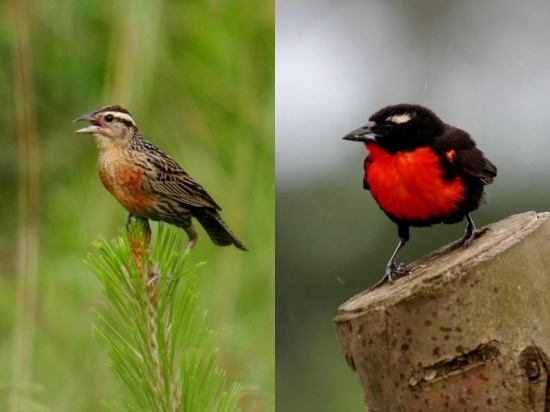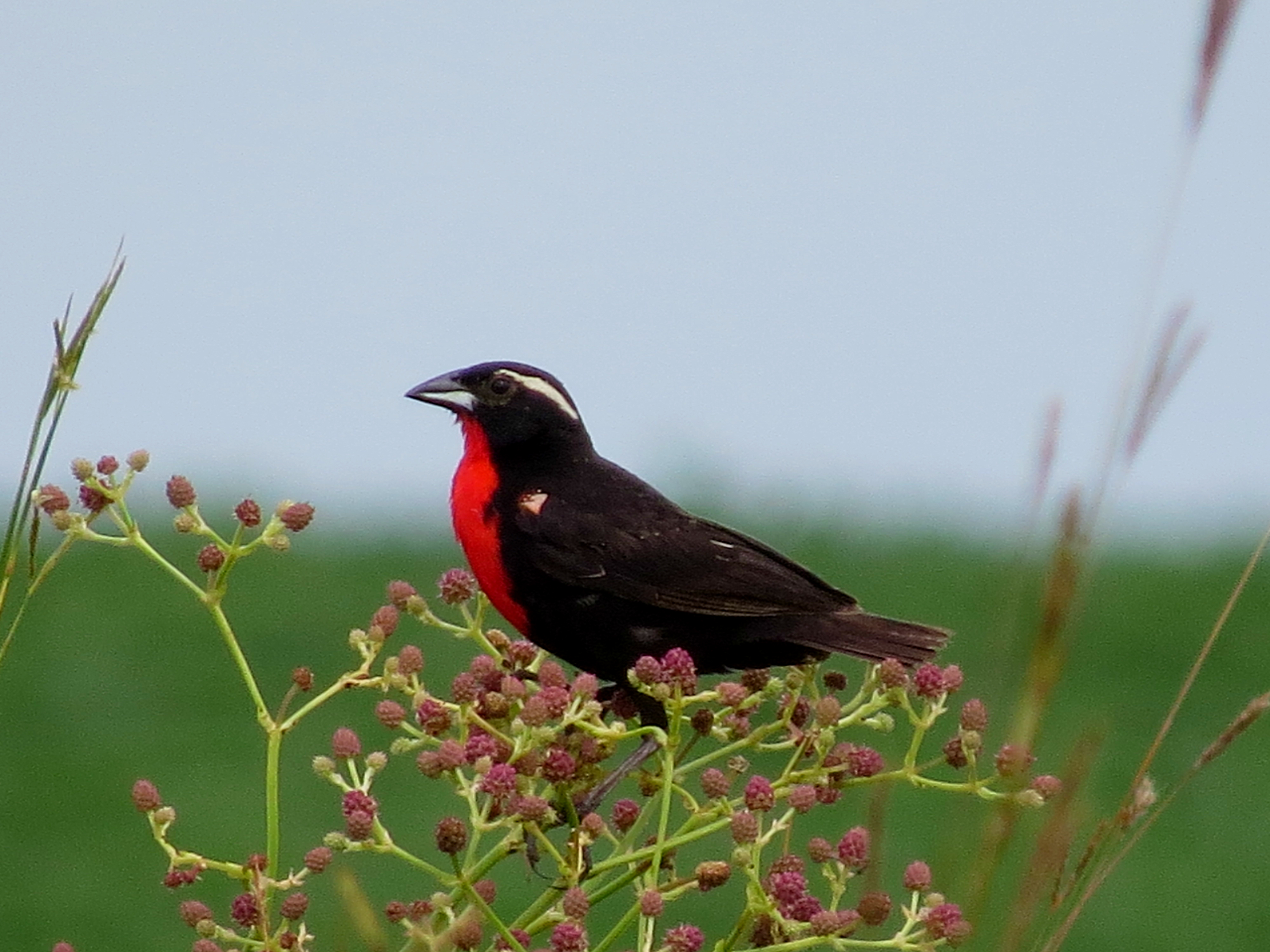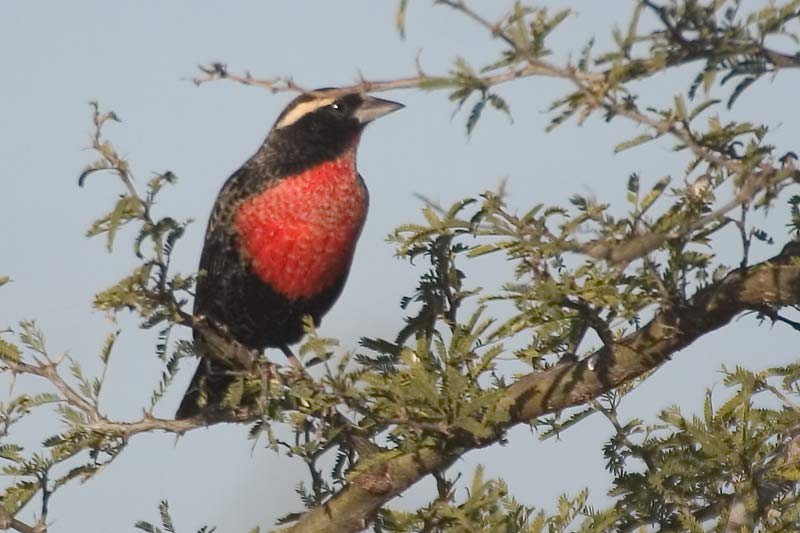
Sturnella superciliaris
TAXONOMY
Trupialis superciliaris Bonaparte, 1851, Matto Grosso, Brazil.
OTHER COMMON NAMES
English: Red-breasted blackbird; French: Sturnelle а sourcils
blancs; German: Rotbruststдrling, Weissbrauenstдrling; Spanish:
Pecho Colorado, Pechicolorado Chico.
PHYSICAL CHARACTERISTICS
6.5–7 in (17–18 cm); female 1.4 oz (39.5 g), male 1.9 oz (53 g).
Sexually dimorphic in color. Males are black with a bright red
throat, breast, and shoulders (visible in flight), and a prominent
white stripe behind the eye. Females have a pale buff stripe
above the eye, dark brown crown stripes and a dark brown
stripe behind the eye, with a brown, mottled back, and buff
undersides, with streaks on the throat and belly, but not on the
breast, which is variously tinged with pink.
DISTRIBUTION
Resident from southeastern Peru and west-central Brazil south to
northern Argentina, and also in the lowlands of eastern Brazil.
Withdraw from the southernmost part of the range in Argentina
in winter. Found from sea level to over 8,200 ft (2,500 m).
HABITAT
Grasslands and damp pastures.
BEHAVIOR
Gregarious, especially in the nonbreeding season, but they often
nest in loose colonies. Territorial during the breeding season.
Males have a spectacular butterfly-like aerial display: they
fly to a height of over 66 ft (20 m) over their territory, then
parachute downward while singing. They also sing from the
ground. Females are difficult to see.
FEEDING ECOLOGY AND DIET
Forage on ground where they take seeds and insects. They often
feed among livestock and agricultural fields.
REPRODUCTIVE BIOLOGY
Monogamous. Nest is placed on the ground, with grass pulled
over it, so that it is not visible from above. Commonly 3–5
eggs are laid in October–January. Data on incubation and
fledging not available.
CONSERVATION STATUS
Not threatened. Locally common throughout; increasing in
numbers and expanding its range in response to the spread of
cultivation of rice and other grain crops.
SIGNIFICANCE TO HUMANS
May cause local damage to crops.
Other popular Animals
Photo Gallery of - White-browed blackbird




 Animalia Life
Animalia Life